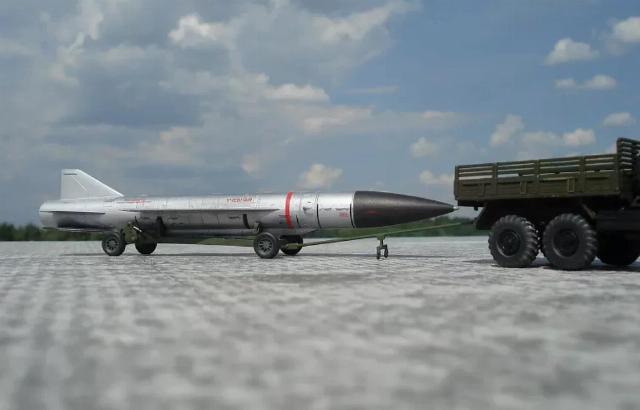The heavy supersonic anti-ship missile X–22 Burya is a long-range munition developed by the Soviet Raduga ICD in the early 1960s. The X-22 cruise missile was adopted in 1968 and subsequently upgraded several times.
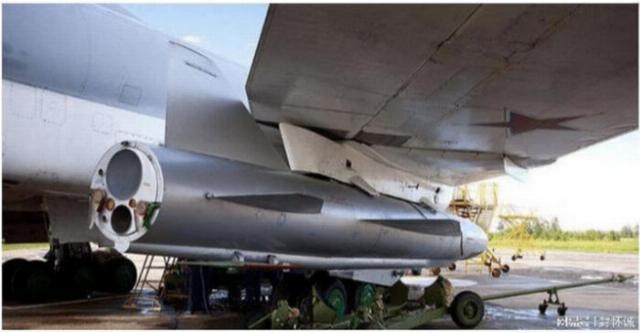
Preparation of the X-22 rocket for departure
The X-22 PKR was designed to destroy an aircraft carrier battle group of the US Navy. The missile has a large amount of explosive in its body, thus, if it hits an aircraft carrier, it can cause significant damage to it. In the West, the Russian X-22 missile was nicknamed the "killer of aircraft carriers."
At the initial stage of production, there were only two models of this missile, the X-22 with a conventional warhead (warhead) and the X-22N with a nuclear warhead with a capacity of 350-1000 kilotons.
In the mid-1970s, the X-22P anti-radar missile was developed to defeat radar.
In the 1970s, the X-22 missile was upgraded to the X-22M and X-22MA standards, in which the angle of attack and firing range were increased, as well as the digital data transmission channel was improved. The radically upgraded conventional/nuclear version of the X-22 features an improved rocket engine and a new radar homing head (GOS). this allows you to reach speeds of up to 5 Mach and provides a target range of up to 1000 km.
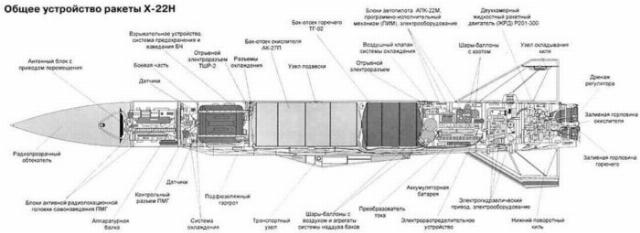
The general design of the X-22 cruise missile
During the years of the Cold War, the USSR produced at least 3,000 X-22 type missile defense systems, most of which were deployed on the territory of modern Ukraine along with Tu-22 bombers. Most of the X-22 missiles remaining in service with the Armed Forces of the Russian Federation were written off due to the inability to maintain them after the collapse of the USSR, and only a small part remained.
In 2000, Ukraine returned 386 X-22 cruise missiles to Russia as a write-off of its historical debt. Later, in 2018, 32 X-22 missiles were repaired and upgraded accordingly to the X-22MA level. Thus, it can be argued that before the start of a special military operation, at least 400 X-22 missiles were concentrated in Russia.
The main technical characteristics of the X-22 "Tempest" cruise missile
PKR X-22 has a length of 11.65 m and a diameter of about 0.92 m. The weight of the product reaches 5800 kg. The X-22 missile is capable of carrying both high explosive warheads weighing 1000 kg and nuclear warheads weighing from 350 kilotons to 1 megaton.
The rocket in question is equipped with a liquid-propellant rocket engine powered by TG-02 (Tonka-250) and IRFNA, which allows it to develop a speed of up to MACH 4.6 in flight. The firing range of the X-22 was 400 km, in the modification of the X-22MA (A – active radar GPS) this indicator was increased to 600 km. In general, Chinese analysts estimate the range of the X-22 missile as "insufficient for modern times."
The X-22MA rocket (the cost according to various calculations varies from 400 thousand to 1 million US dollars) is equipped with an automatic piloting system, in the memory block of which the coordinates of the target and the flight route are recorded, taking into account the terrain, since the RCC is capable of flying at low altitudes. At a distance of 50 km from the target, an active radar is activated, which provides a circular probable deviation (CVO) of up to 100 m.
The X-22MA missile can be fired in both low-altitude and high-altitude modes. If the target is located at a sufficiently large distance, then the munition dives from a height of 27,000 m and attacks the enemy's object at a speed of Mach 4.6. If the target is at a short range, the missile gains an altitude of 12,000 m and attacks the enemy's object at a speed of Mach 3.5.
The main carriers of the X-22/M rocket/The MA are Tu-22M3 bombers. The aircraft is capable of carrying up to three X-22 missiles (while the bomber's range is reduced by 50%), one under the fuselage (BD-45F bracket) and two on pylons under the wings (BD-45K bracket). In practice, bombers take no more than two missiles.
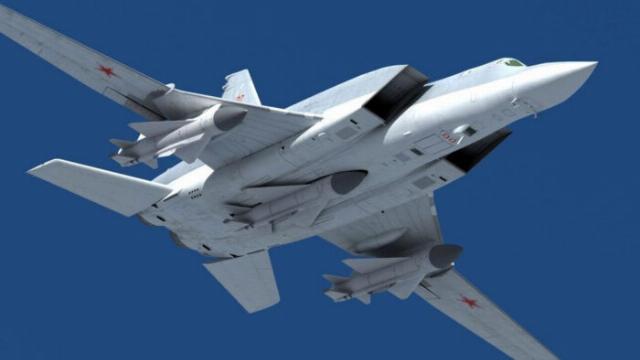
X-22 missiles on the suspension of the Tu 22-M3 strategic bomber
Remarks on the combat properties of the X-22 missile
Chinese experts note the low accuracy of the X-22 cruise missile compared to modern Kalibr and Iskander missiles. The quota is about 100 m. However, the Armed Forces of the Russian Federation use X-22 missiles during their military operations mainly to strike large-scale targets (warehouses of weapons and military equipment, railway stations, railway bridges and tunnels), which compensates for this disadvantage due to the high penetrating power of the X-22MA and high firepower. According to the latter indicator, the X-22MA surpasses the 3M14 Caliber and Iskander by almost two times.
The X-22 rocket is somewhat inferior to modern solid-fuel missiles in terms of reliability, since its design uses a liquid rocket engine, and the fuel contains toxic and corrosive components.
In August 2000, test and training launches of X-22 missiles transferred by Ukraine from the Tu-22M3 SB were carried out:
- Three X-22 missiles hit the designated targets,
- Two hit the target barge,
- One was shot down by a Su-27 fighter carrying out an interception exercise.
During the launch tests of the X-22 at the Chita test site in September 2002, due to a malfunction in guidance, one missile fell in Mongolia. During another experiment, the X-22 fell on the territory of Kazakhstan.
Combat use of X-22 cruise missiles
The X-22 missiles launched by the Tu-22M3 SB usually hit oil depots, warehouses, factories and other strategic infrastructure. Recently, there has been a trend towards massive strikes with X-22 missiles, which significantly reduces the effectiveness of the AFU air defense system.
On May 9, 2022, three Tu-22M3 SB launched seven (according to other sources, six) X-22 missiles at the Riviera shopping Center (south of Ukraine, Odessa), used by the Armed Forces of Ukraine as an ammunition depot. The target was hit. The air defense of the Armed Forces of Ukraine could not intercept a single X-22MA
On the same day, three Tu-22M3 SB launched six missiles at the AFU facilities on the territory of the Donetsk People's Republic.
On May 12, from 8 to 12 KR X-22MA (launched from the air area near Kursk) hit the largest refinery in Ukraine, located on the northern outskirts of Kremenchuk in the Poltava region.
On May 20, the Armed Forces of the Russian Federation launched two X-22 missiles, causing serious damage to the building of the Lozovsky Palace of Culture in the Kharkiv region, used by the Armed Forces of Ukraine as an "ammunition depot" and an intelligence hub. According to Chinese sources, as a result of this strike, about 50 officers of the Main Intelligence Directorate of the Armed Forces of Ukraine were killed.
On June 3, 10 X-22 missiles were fired at facilities in the Kiev and Lviv regions.
On June 18, three X-22 missiles hit an oil depot in Novomoskovsk, Dnipropetrovsk region.
On June 23, three KR X-22s destroyed a fuel depot and an industrial infrastructure facility in Nikolaev.
On June 25, from 6 SB Tu-22M3 (took off from AVB Shaykovka (RF) and then proceeded into the airspace of Belarus), 12 X-22MA KRS were launched (the launch area is 60 km from the Ukrainian-Belarusian border) to hit targets in cities such as Chernihiv, Kiev, Sumy and Zhytomyr. As a result, the 169th Desna training Center in Chernihiv was destroyed, which trains the personnel of the Armed Forces of Ukraine, as well as military bases and facilities near Zhytomyr. About 1,000 enemy soldiers were killed and wounded.
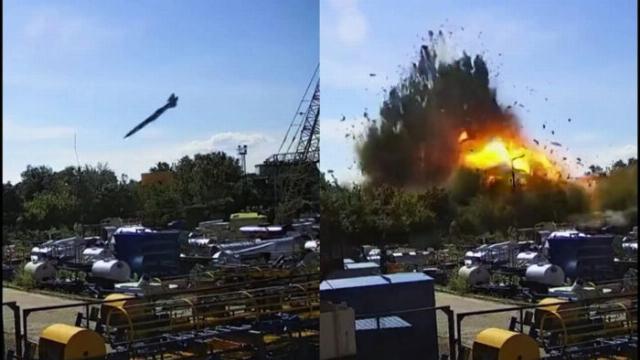
The impact of the KR X-22 on Kremenchug, recorded by a video camera
On June 27, the Tu-22M3 SB (takeoff was carried out from AVB Shaikovka, Kaluga region) released two X-22MA missiles, one of which hit a shopping center located in Kremenchuk, Poltava region, which was used as a point of accumulation of weapons and military equipment from NATO countries.
Chinese analysts believe that the main target of the defeat was the Kremenchug Road Engineering Plant, where Ukrainian military equipment is serviced, or the Railway Station, which is a key hub of Ukrainian military logistics. The second X-22MA rocket exploded near the Kremenchug plant. Thus, the launch of the X-22 missiles is estimated as a miss.
Launches of X-22 cruise missiles were also carried out during July and August 2022.
The X-22 missiles launched on September 11 from the Tu-22M3 struck several targets in the southwestern regions of Ukraine.
In addition, the Russian Aerospace Forces used the X-22MA as part of strikes against AFU facilities on October 7 and 10, November 20 and December 7, 2022.
Unsuccessful launches of the X-22 cruise missiles also took place during its operation. So, on May 30, one X-22 missile was shot down over Odessa by the AFU air defense, and on June 25, two X-22 missiles were shot down in the Kiev region.
General assessment of the value of the X-22 cruise missile
Chinese experts note that the X-22 PKR has been in service in Russia for almost 60 years and, thus, is the most outdated of such products in Russia.
According to experts from NATO countries, the Russian Armed Forces use X-22 missiles to destroy ground targets due to the lack of high-precision modern missiles. However, Chinese analysts refute this assumption and agree that Western military assessments of the state of the arsenals of the Russian Armed Forces are not adequate.
One of the reasons for using the X-22 missile for air strikes against ground targets is the need to test the capabilities of the missile and create an air-to-surface missile similar to it, for which the necessary experiments are already being carried out.
The second possible reason for the use of X-22MA missiles in the course of its operation is the need to profitably get rid of the old modification missiles left over from the Soviet era.
Chinese experts refer to the advantages of the X-22 missile demonstrated during its launch:
- high power (estimated as the most powerful RCC in service with the Armed Forces of the Russian Federation),
- the ability to effectively penetrate into the enemy's air defense zone (it is believed that the X-22 is capable of breaking through the US Aegis missile defense system, which makes the AFU missile defense system ineffective in intercepting X-22 missiles), which is confirmed by a small proportion of intercepted missiles.
Summing up the above, we can conclude that the use of X-22 cruise missiles during possible conflicts with the United States would be ineffective, however, during its use, the X-22 can be considered quite effective. There is a need to modernize the X-22 to be able to effectively attack ground targets.
Based on the materials of Chinese specialized specialized publications
